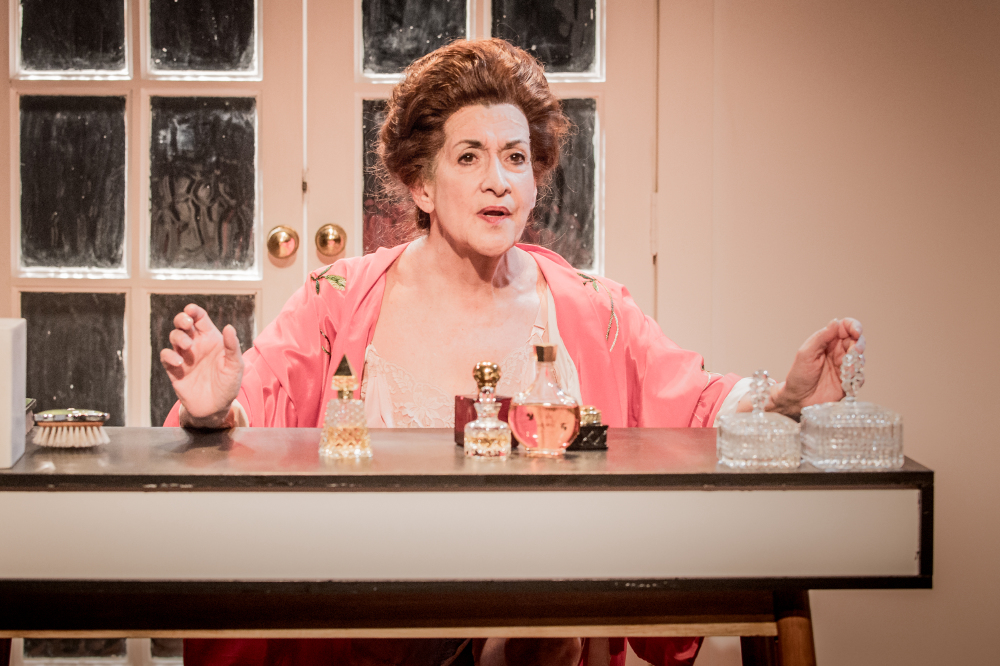In 2011, Austin Pendleton saw me do a monologue from Woman Before a Glass and said “You should do the whole play and invite everyone.” I asked if he would consider directing it and, happily, he said he would. Being a certain age, I decided I had no time to waste, so I produced it myself. A great learning experience as I not only researched and worked on the part, but I learned enormous amounts about producing. Since I also discovered I had breast cancer (luckily found very, very early), I found that keeping busy with some meaningful project while going through any kind of crisis can be enormously helpful. So, a triple win!

Judy Rosenblatt by Robert Workman
I adore the play. And the fact that the playwright, Lanie Robertson, came to four of the sixteen performances meant everything to me (he also saw the Invited Dress in NY and flew here for the Opening!) In the six and a half years following the first production, I peddled the play everywhere. Several ‘almost’ productions fell through for one reason or another (as anyone in the theatre knows comes with the territory) and then, last year, I sent some clips and NY reviews to several playhouses in London. Tom Littler contacted me, said he thought the play might be a good fit for the Jermyn Street Theatre, and we arranged a meeting. The rest is history. Tom and his team here have been wonderful to work with, and I’m enormously grateful for this splendid opportunity.
Woman Before a Glass takes place in the 1960’s in Peggy’s palazzo and in a gondola on the Grand Canal. It highlights four meaningful events in Peggy’s life while she’s in her sixties. It’s funny and moving and, like all of Lanie’s work, is an incredible vehicle for an actor (as is well-known to anyone who’s seen Audra McDonald in Lady Day at the Emerson Bar and Grill)
Peggy Guggenheim was an unconventional woman who led a fascinating life. Peggy discovered, encouraged, subsidised, and married or had affairs with many of the greatest Surrealist and Expressionist painters of the first half of the 20th Century. She smuggled her fabulous collection out of Europe and away from destruction at the hands of Adolf Hitler, who considered the works ‘evil, decadent…. and Jewish.’
Her contribution to the art world was enormous; her personal relationships, however, were fraught with sadness and instability. Her beloved father went down on the Titanic when she was 13; her adored older sister, Benita, died in childbirth and Pegeen, her favourite child, committed suicide. Her happiest love relationship was cut short after her lover, John Holmes, died in what should have been a simple surgery.
Carol Veil, one of Peggy’s granddaughters, attended one of my performances and asked me if I liked Peggy. I told her I loved Peggy. She told me she considered her grandmother to be a great art collector, but a bad mother and grandmother. Of greater significance to me, however, in understanding the character I’m playing, is something I read about one of her grandsons. As a child, he said, he never felt close to Peggy, and was sure she didn’t love him. His feelings toward her were reversed, however, when, after her death, he read some of her letters. In them she talks about him as her favourite grandchild and says she adored him. ‘But#, she said, ‘I don’t want to love him too much. Everyone I love, dies.’
Tagged in Theatre

